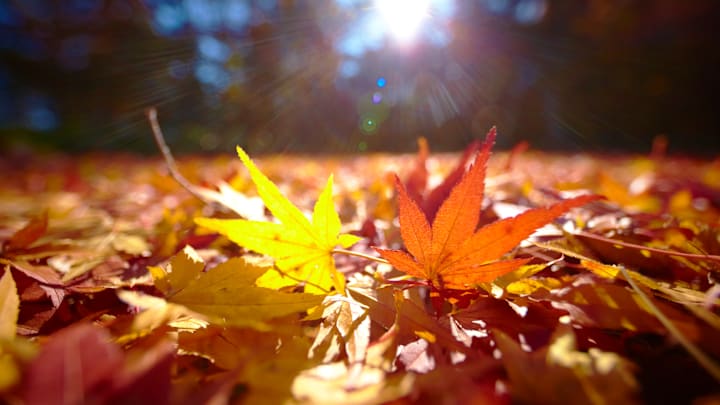Nature experts have a message for anyone with a lawn heading into autumn: Step away from the rake.
As the weather turns cooler, trees change, leaves begin to fall, and homeowners embark on one of the most back-breaking chores of the year. But if the thought of spending hours combing your property has you dreading the return of fall, there’s good news: You don’t have to.
Scientists are debunking the myth that a layer of leaves is bad for our lawns. Rather, the practice of ignoring plant debris—which they’ve labeled “leaving leaves”—offers numerous benefits. Instead of piling and burning or bagging a tree’s leftovers when the seasons change, experts suggest letting your soil reap the rewards of the decomposing organic matter.
“A forest has the richest soil there is, and that happens because leaves are falling off the trees and decomposing right there and organic materials are going back into the soil,” Susan Barton, a professor of landscape horticulture at the University of Delaware told The New York Times. “We should be doing that in all of our landscapes, but we’re not.”
In fact, ecologists argue that a coating of leaves on the ground doesn’t just improve the health of your grass—it supports local wildlife, too.
“The fallen leaf layer is actually [a] really important wildlife habitat,” David Mizejewski, a naturalist with the nonprofit group the National Wildlife Federation, told The Washington Post. Mizejewski cites birds, bees, moths, and small mammals like chipmunks as some of the animals that benefit from a thin blanketing of foliage. “All sorts of creatures rely on that for their survival as a place where they can find food and cover, and in many cases even complete their life cycle.”
Of course, you don’t have to be wading through piles of leaves before your yard sees results. Experts suggest leaving anywhere from 20 percent to 50 percent of leaf accumulation alone. Diana Alfuth, an extension educator for the University of Wisconsin’s horticulture department, explains that small amounts of leaves will redistribute themselves with the wind while larger collections need a quick run-through with a lawnmower to become fertilizer. But if you can barely see the green beneath the red and brown, it’s time to take action.
Alfuth explains in a blog post, “You don’t need to get every last leaf,” but removing half of them can “prevent matting and smothering of the grass.”
When you do rake, don’t go to the trouble of piling old leaves in trash bags and taking them to the dump. According to Mizejewski, that’s “by far the worst thing” to do.
“What happens when those things get buried in the landfills is they break down in anaerobic conditions with no oxygen, and that produces methane, which of course, is a potent greenhouse gas.” Burning dead leaves also produces dioxins that are bad for the environment—and not to mention your lungs.
Instead, recycle them yourself. Leave them in a pile at the edge of your yard after mowing over them and chopping them up. That way they can serve as compost for your spring vegetable garden or mulch to protect your soil when the ground begins to freeze over.
Read More About Fall Foliage:
